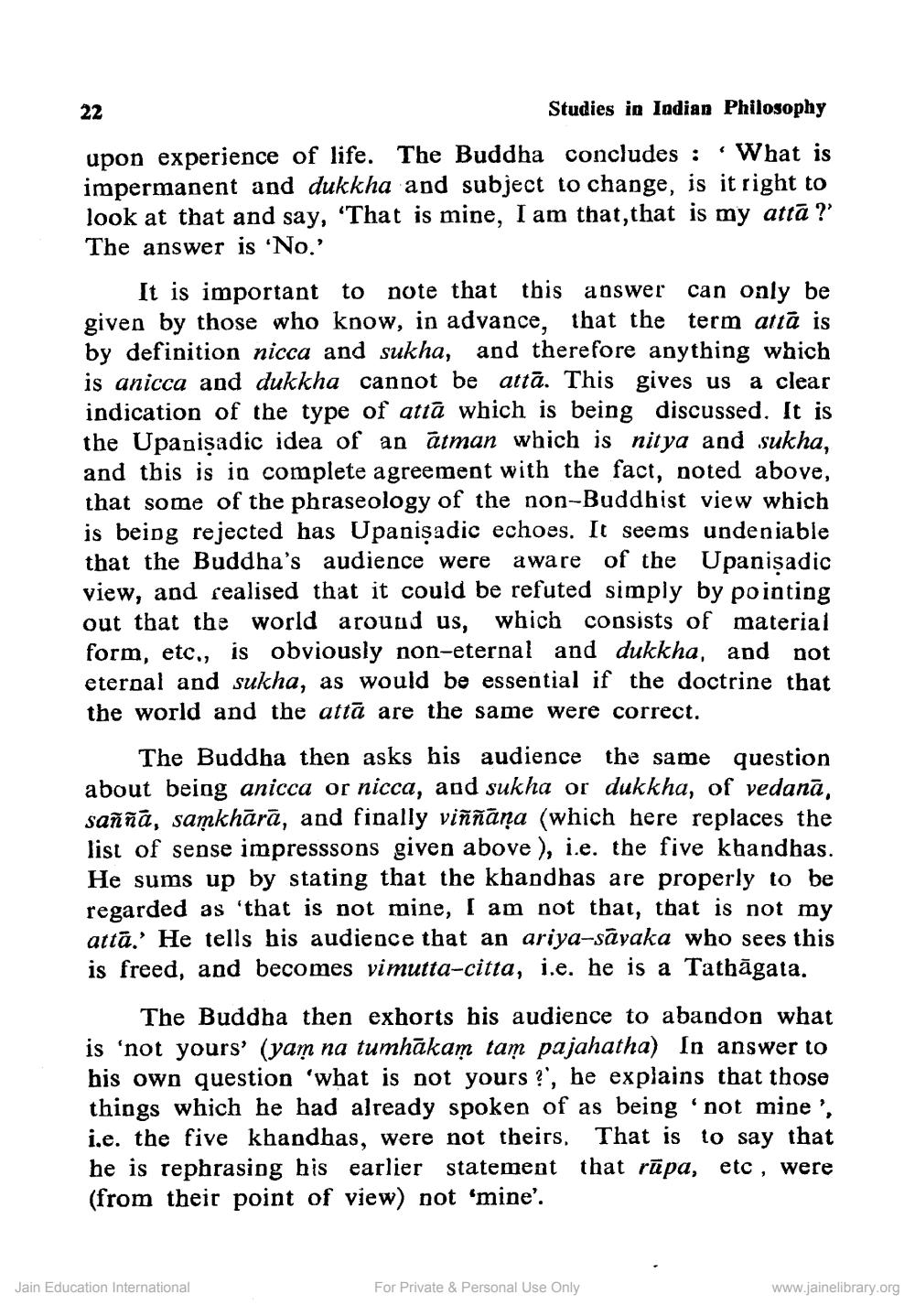________________
22
Studies in Indian Philosophy
upon experience of life. The Buddha concludes : What is impermanent and dukkha and subject to change, is it right to look at that and say, "That is mine, I am that, that is my attā ?' The answer is 'No.'
It is important to note that this answer can only be given by those who know, in advance, that the term attā is by definition nicca and sukha, and therefore anything which is anicca and dukkha cannot be attā. This gives us a clear indication of the type of attā which is being discussed. It is the Upanisadic idea of an ātman which is nitya and sukha, and this is in complete agreement with the fact, noted above, that some of the phraseology of the non-Buddhist view which is being rejected has Upanişadic echoes. It seems undeniable that the Buddha's audience were aware of the Upanisadic view, and realised that it could be refuted simply by pointing out that the world around us, which consists of material
etc., is obviously non-eternal and dukkha, and not eternal and sukha, as would be essential if the doctrine that the world and the attā are the same were correct.
The Buddha then asks his audience the same question about being anicca or nicca, and sukha or dukkha, of vedanā, saññā, samkhārā, and finally viññāņa (which here replaces the list of sense impresssons given above ), i.e. the five khandhas. He sums up by stating that the khandhas are properly to be regarded as 'that is not mine, I am not that, that is not my attā.' He tells his audience that an ariya-sāyaka who sees this is freed, and becomes vimutta-citta, i.e. he is a Tathāgata.
The Buddha then exhorts bis audience to abandon what is 'not yours' (yam na tumhākam tam pajahatha) In answer to his own question 'what is not yours?', he explains that those things which he had already spoken of as being 'not mine', i.e. the five khandhas, were not theirs. That is to say that he is rephrasing his earlier statement that rūpa, etc, were (from their point of view) not 'mine'.
Jain Education International
For Private & Personal Use Only
www.jainelibrary.org




